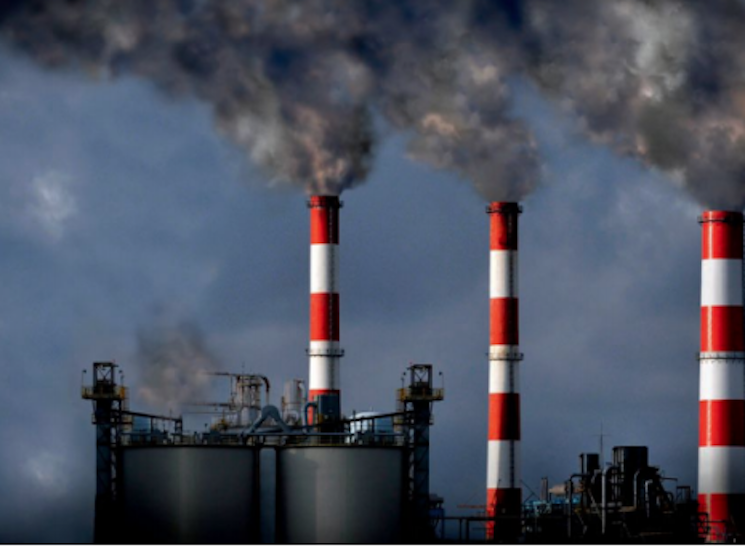By, Robert Ukeiley November 20, 2015

Red and White stripes on a smoke stack indicate a plant is or was burning coal as a fuel source. Some of these plants have been converted to gas or oil burners
 While the Clean Power Plan, the first ever to limit greenhouse gas emissions from existing power plants, continues to garner much media attention, there are other environmental regulations available to internalize the cost of dirty energy in order to level the economic playing field for renewable energy and energy efficiency. Upcoming regulatory efforts to further reduce harmful levels of ground level ozone, formed in the air from fossil fuel emissions and commonly referred to as smog, are a good example.
While the Clean Power Plan, the first ever to limit greenhouse gas emissions from existing power plants, continues to garner much media attention, there are other environmental regulations available to internalize the cost of dirty energy in order to level the economic playing field for renewable energy and energy efficiency. Upcoming regulatory efforts to further reduce harmful levels of ground level ozone, formed in the air from fossil fuel emissions and commonly referred to as smog, are a good example.
Ozone has a variety of adverse impacts including causing premature death, asthma, damage to crops and decreasing forests ability to sequester carbon. Those most at risk of being harmed by ozone are people who work or recreate outside, the young, the old and people with pre-existing health problems like asthma and COPD. Despite decades of attempted efforts, tens of millions of people in the United States continue to live, work and recreate in areas with unsafe levels of ozone. This includes people in the metropolitan areas of Atlanta, Chicago, Denver, New York, Phoenix, San Diego, as well as Houston, Philadelphia, Pittsburgh, St. Louis and Washington, D.C. I say metropolitan because ozone levels are often higher in the outlying suburbs compared to downtown.
Two regulatory opportunities are coming up which address ozone and have important implications for renewable energy. For the metropolitan areas of Atlanta, Chicago, Denver, Phoenix, and San Diego, as well as much of the Northeast, state air pollution agencies and the U.S. Environmental Protection Agency (US EPA) will be setting Reasonably Available Control Technology (RACT) based emission standards for major sources of nitrogen oxides (NOx) and volatile organic compounds (VOCs), which are the precursor chemicals to ozone formation. Left to their own devices, state agencies and US EPA will often set very weak RACT limits based on major sources of pollution doing nothing or at best operating existing controls. For example, for the past quarter century, coal fired power plants have had the option of controlling NOx emissions with a Selective Catalytic Reduction (SCR) device. US EPA has publicly stated time and time again that SCR is “highly cost effective.” Yet, nearly half the coal burning units in the country do not have SCR and those that do have it usually only run the SCR sporadically.
The other opportunity is that US EPA recently finalized a new the national ambient air quality standard (NAAQS) for ozone. US EPA set the standard at 70 parts per billion (ppb), which is more stringent than the 2008 standard of 75 ppb but much weaker than what is needed, according to scientists, to protect our public health and welfare, including agriculture and native ecosystems. US EPA and the states will now begin the multi-year process of implementing the 70 ppb standard.. A vocal minority of politicians claim that the new ozone NAAQS will cost jobs in the oil and gas sector and among other polluters. What these politicians do not say is that by allowing dirty energy to dump their uncontrolled pollution on the public, dirty energy gets what is effectively a subsidy, which costs jobs in the clean energy sector. People who work in the clean energy sector need to be loud and clear that their jobs are real and just as important as jobs in the dirty energy sector. Full and timely implementation of the 70 ppb standard will help to reduce the dirty energy sector’s subsidy.




